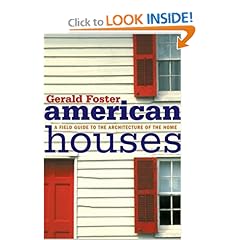American Houses: A Field Guide to the Architecture of the Home
While the U.S. boasts many great public buildings, designed by architects both homegrown and imported, Foster's operating premise is that most of America's vital and expressive architectural tradition has been a domestic one. The great breadth of this tradition—from Monticello through "Early Louisiana Shotgun" to Frank Lloyd Wright—is immaculately and exhaustively described by Foster, a teacher and former partner of Walter Gropius's Architects Collaborative.
The book's three extensive sections ("Colonial Traditions," "19th-Century Styles" and "20th-Century Revivals and Innovations") offer not only a visual primer on virtually every important strain of American home building but also extensive and useful annotation on their social and aesthetic backgrounds. The author's numerous drawings are models of clarity. It is useful to have the characteristics of such familiar styles as Gothic Revival and Mission so clearly delineated, and less well-known styles are amply explored. The author of two previous Field Guides, on trains and airplanes, Foster clearly intends this book to be used rather than consulted, to be thrown in the car or jammed in a shoulder bag rather than put on a shelf. While Foster is no Tom Wolfe–style polemicist, he is not afraid to be critical when it aids understanding. And more through implication than direct statement, Foster considers the vernacular tradition he describes as belonging to a quickly receding past, one that this book will do much to help preserve.

No comments:
Post a Comment